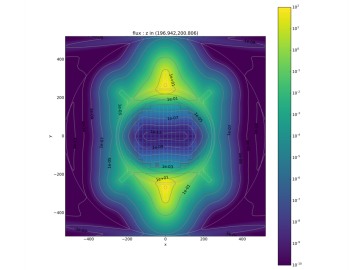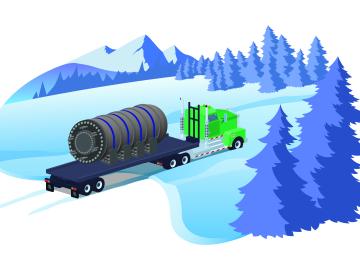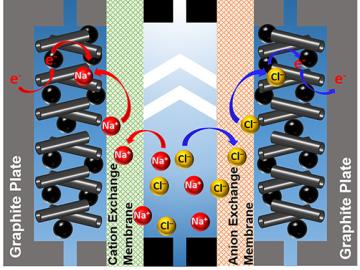
Filter News
Area of Research
- Advanced Manufacturing (2)
- Biology and Environment (5)
- Computational Biology (1)
- Computational Engineering (1)
- Computer Science (4)
- Energy Science (12)
- Fusion and Fission (5)
- Fusion Energy (4)
- Isotopes (1)
- Materials (10)
- National Security (7)
- Neutron Science (4)
- Nuclear Science and Technology (6)
- Quantum information Science (2)
- Supercomputing (18)
News Type
News Topics
- (-) Biomedical (6)
- (-) Clean Water (6)
- (-) Cybersecurity (11)
- (-) Frontier (7)
- (-) Machine Learning (9)
- (-) Molten Salt (1)
- (-) Nuclear Energy (17)
- (-) Summit (7)
- 3-D Printing/Advanced Manufacturing (19)
- Advanced Reactors (10)
- Artificial Intelligence (17)
- Big Data (9)
- Bioenergy (12)
- Biology (12)
- Biotechnology (1)
- Buildings (11)
- Chemical Sciences (11)
- Composites (5)
- Computer Science (35)
- Coronavirus (6)
- Critical Materials (4)
- Element Discovery (1)
- Energy Storage (26)
- Environment (22)
- Exascale Computing (5)
- Fossil Energy (1)
- Fusion (8)
- Grid (14)
- High-Performance Computing (7)
- Hydropower (5)
- Irradiation (1)
- Isotopes (4)
- ITER (1)
- Materials (27)
- Materials Science (27)
- Mercury (1)
- Microscopy (9)
- Nanotechnology (10)
- National Security (10)
- Neutron Science (25)
- Partnerships (7)
- Physics (13)
- Polymers (5)
- Quantum Computing (2)
- Quantum Science (14)
- Security (4)
- Simulation (2)
- Space Exploration (7)
- Transportation (18)
Media Contacts

Scientists at Oak Ridge National Laboratory studying quantum communications have discovered a more practical way to share secret messages among three parties, which could ultimately lead to better cybersecurity for the electric grid

Researchers at Oak Ridge National Laboratory are taking inspiration from neural networks to create computers that mimic the human brain—a quickly growing field known as neuromorphic computing.

Researchers have developed high-fidelity modeling capabilities for predicting radiation interactions outside of the reactor core—a tool that could help keep nuclear reactors running longer.

A study led by Oak Ridge National Laboratory explored the interface between the Department of Veterans Affairs’ healthcare data system and the data itself to detect the likelihood of errors and designed an auto-surveillance tool

OAK RIDGE, Tenn., May 7, 2019—The U.S. Department of Energy today announced a contract with Cray Inc. to build the Frontier supercomputer at Oak Ridge National Laboratory, which is anticipated to debut in 2021 as the world’s most powerful computer with a performance of greater than 1.5 exaflops.

Using Summit, the world’s most powerful supercomputer housed at Oak Ridge National Laboratory, a team led by Argonne National Laboratory ran three of the largest cosmological simulations known to date.

In a step toward advancing small modular nuclear reactor designs, scientists at Oak Ridge National Laboratory have run reactor simulations on ORNL supercomputer Summit with greater-than-expected computational efficiency.

Oak Ridge National Laboratory scientists are evaluating paths for licensing remotely operated microreactors, which could provide clean energy sources to hard-to-reach communities, such as isolated areas in Alaska.

A team of scientists led by Oak Ridge National Laboratory used carbon nanotubes to improve a desalination process that attracts and removes ionic compounds such as salt from water using charged electrodes.

OAK RIDGE, Tenn., March 20, 2019—Direct observations of the structure and catalytic mechanism of a prototypical kinase enzyme—protein kinase A or PKA—will provide researchers and drug developers with significantly enhanced abilities to understand and treat fatal diseases and neurological disorders such as cancer, diabetes, and cystic fibrosis.


